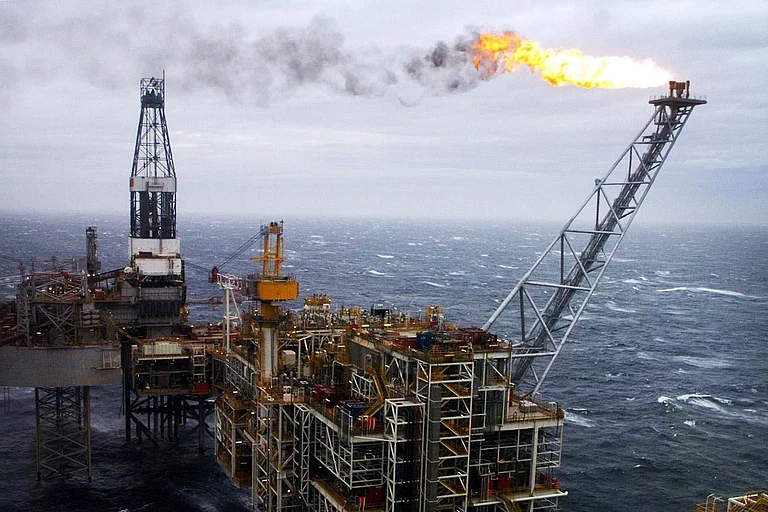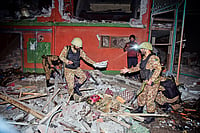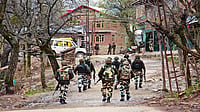On June 15 last year, bilateral relations between India and China touched its lowest mark. Around April-May 2020, as the world descended into the worst health crisis of recent times—the COVID-19 pandemic originating from Wuhan—the Chinese leadership chose to escalate border tensions with India in Ladakh.
As part of its annual training schedule, the PLA undertook a major military exercise, with “latest weapons”, according to China’s state-run newspaper Global Times. By May, rather than reverting to pre-exercise dispositions, PLA intruded into India at several locations across the Line of Actual Control (LAC). Tensions rose further when PLA tried to prevent Indian troops, patrolling up to the LAC and known ‘patrolling points’. India responded with immediate reinforcement of dispositions along the LAC in the areas of Pangong Tso and Chushul sub-sector, and further north in the Lukung sub-sector and the Sub-Sector North.
ALSO READ: Infernal Affairs
On June 6, 2020, after a number of aggressive, some violent, face-offs at various points in eastern Ladakh, the first round of Corps Commander level talks was held at Chushul-Moldo, the designated Border Personnel Meeting (BPM) point. India and China agreed upon measures to de-escalate the situation and resolve the issues.
On the evening of June 15, at around last light (sunset), when Indian troops reached Galwan to verify whether the disengagement was happening, as per the agreement of June 6, Colonel B. Santosh Babu, the commanding officer and his troops were attacked by the PLA with primitive weapons like spears and serrated rods. The Chinese had clearly armed themselves for this medieval attack. As the hand-to-hand combat intensified, both sides rushed reinforcements through the night, across narrow high altitude mountain ridges and fast-flowing icy waters in the river below.
ALSO READ: Checkmate & Stalemate

The Chinese attacked Indian soldiers with rocks and wooden sticks embedded with nails, killing at least 20, including Colonel B. Santosh Babu, commanding officer of 16 Bihar Regiment. Beijing admitted four Chinese casualties, but the count could be more. Both sides observed a long-held protocol to avoid using firearms on the sensitive, high-altitude frontier.
Col Babu and 19 soldiers of the Indian Army made the supreme sacrifice in the violent attack. According to US and Russian intelligence, casualties on the Chinese side are estimated at 35 to 45. China has publicly accepted four casualties.
ALSO READ: ‘This Apathy Breaks My Heart’
Col Santosh Babu was awarded the Maha Vir Chakra (MVC)—the second highest military decoration in India, awarded for acts of conspicuous gallantry in the presence of the ‘enemy’—posthumously. The Chinese Military Commission, headed by President Xi Jinping, awarded the regimental commander of the PLA, Qi Fabao, the title of ‘Hero Regimental Commander for defending the border’.
According to Global Times, one PLA soldier, Chen, wrote in his diary, “When facing the enemy who outnumbered us, none of us flinched. Amid their stone attacks, we drove them away.” The pretence of peace, tranquility and cooperation was over, as both sides openly declared the other as the enemy.

Although on the face of it, the clash in Galwan was a tactical action, its implications were far-reaching. It brought the two countries to the brink of war more precariously than at any time since the last exchange of fire in 1975. Both India and China mobilised their forces in preparation for a major conflict, and the world took notice.
ALSO READ: ‘We’re Proud Of The Bihar Regiment’
India’s border with China, or the ‘Line of Actual Control’, as is well known now, is neither delineated nor demarcated, and therefore is a subject of perception and varying interpretation. Since 2003, after 22 rounds of special representative level talks, the mechanism set up to “explore from the political perspective of the overall bilateral relationship the framework of a boundary settlement” have not yielded substantial results. However, over the years and until recently, the situation on the ground remained peaceful, as both sides abided by the series of agreements and confidence-building measures.
ALSO READ: Beard The Lion To Bell The Cat
The deviation from a situation of ‘peace and tranquility’ along the border can be traced to Xi Jinping’s meteoric growth that has established him as the paramount power in China. On November 15, 2012, Xi was appointed general secretary, Chinese Communist Party, and chairman, Central Military Commission. On March 14, 2013, he was appointed president. Within a fortnight, on March 29, 2013, Xi Jinping emphasised an early resolution of the border issue with India.
Eighteen days later, on April 15, the first protracted face-off between the Indian Army and the PLA took place in the Depsang area (Sub-Sector North). In the next year, there was another long face-off in Chumar, further south. Since then, there have been frequent clashes at Pangong Tso, Demchok, areas of Daulat Beg Oldi and Chumar, and the famous 72-day confrontation at Doklam in 2017.
ALSO READ: Asymmetry Of Threat management
The 2015 Chinese defence white paper on Strategy in Perspective emphasised the increased focus on jointness of command. The next year, in February 2016, President Xi officially inaugurated five theatre commands: North, South, East, West and Central. Western Theatre Command is responsible for the Tibet Autonomous Region and Xinjiang, and primarily directed against India.
Alongside structural changes, China has been heavily investing in infrastructural expansion and operational readiness in its Western Theatre. By 2017, PLA was rapidly creating a high-altitude oriented ecosystem comprising suitable habitat for troops, airfields, aircraft shelters, missile dumps, radar stations etc for enhancing operational preparedness.
ALSO READ: Sharp Edge Of Realpolitik
The 2020 Pentagon Report on PLA to the US Congress mentions that by mid-2018, PLA started stressing on realistic combat training in the Western Theatre Command and other theatres. China’s 2019 defence white paper states that it will “pursue national defence goals, which include safeguarding national sovereignty, unity, territorial integrity”. Clearly, the new and confident China was breaking out of Deng Xiaoping’s professed strategic guidance, “bide our time, and hide our capacities”. South China Sea, Taiwan, Tibet and Xinjiang—the territories where China perceives challenges to its ‘national sovereignty, unity, territorial integrity’—are declared areas for demonstrating assertive military posture. The much proclaimed ‘peaceful rise of China’ was passé.

Aside from Galwan Valley, Indian and Chinese troops have faced off across Pangong Tso—a lake extending from Tibet Autonomous Region into Ladakh
On August 28-29, 2020, at the Seventh Central Symposium on Tibet Work, China’s most important forum for Tibet policies, President Xi ordered his party, government and military leaders, to “solidify border defences in Tibet and ensure frontier security, national security, and enduring peace and stability” in the Tibet region. Xi Jinping’s focus is to solidify China’s grip on whatever remains ‘autonomous’ of the Tibet Autonomous Region. With an area of 2.5 million square kilometres, Tibet was once almost one-fourth the size of China. In 1965, China gobbled half of Tibet’s territory into its four provinces of Gansu, Qinghai, Sichuan and Yunnan. What remains as TAR is one-eighth of the whole of China.
ALSO READ: The Falcon Has Landed
Tibet has the third largest ice reserve. Some of the major rivers flowing through South Asia and Southeast Asia originate from Tibet. The control over rivers flowing into all the countries bordering Tibet is an obvious lure. Tibet has precious metals and minerals like chromium, gold, iron, magnesium, uranium and silver. It has coal, gas oil and some rare earth minerals—natural resources contributing to China’s power.
The India-China border issue is closely linked with both Tibet and Xinjiang, and in this era of China’s aggrandisement of power, it would be naïve to expect border resolution, in what could even remotely be called a “fair, reasonable and mutually acceptable solution” from India’s perspective. As Global Times reports, a precipice in the Galwan valley is carved with eight Chinese characters, meaning: “Give up no inch of the picturesque landscape in China.” Purportedly, the oath is administered by Qi Fabao, the PLA regimental commander in Galwan, to his troops.
ALSO READ: China Shops In India Bazaar
On the ground in Eastern Ladakh, the ninth round of military talks in January led to a disengagement of frontline troops in the Pangong Tso area. According to the joint statement: “The two sides agreed to follow the important consensus of their state leaders, continue their communication and dialogue, stabilise and control the situation on the ground, push for a mutually acceptable resolution of the remaining issues in a steady and orderly manner, so as to jointly maintain peace and tranquility in the border areas.”
The PLA reportedly withdrew over 200 main battle tanks from Pangong Tso and around 100 heavy vehicles were used to ferry back disengaging troops. As a note of caution, it would be appropriate to quote the Chinese scholar affiliated with Tsinghua University, Qian Feng, who says, “The PLA has the ability to withdraw this many forces in one day, but can also replenish that much in a single day.”
Five months after Galwan, in November 2020, during the course of a military training meeting of the Central Military Commission, Xi urged for the establishment of a modern military training system to raise PLA’s capability of winning wars and transform them into a “world-class military”. Xi’s focus is to build a “mechanised and informationised military”, with enhanced strategic reach.

An Indian military airplane in Ladakh; an army truck ferries troops to protect the volatile front
However, the sequence of events of 2020 clearly indicate that China had not anticipated the scale and swiftness of India’s military mobilisation in response to PLA’s post-exercise manoeuvre to revise claim lines. India’s reaction to the Galwan encounter came as a shock to the belligerent PLA. And the action by India in August end, to occupy Magar Hill, Gurung Hill, Rechen La, Rezang La, Mokhpari and the dominating height over Chinese positions near Finger 4, took the wind out of China’s sails. India’s capabilities in high-altitude and extreme cold weather warfare enabled the resolute stand taken by the forces.
The year-long stand-off has tested India’s resilience. Acceleration of the long overdue infrastructure projects, logistics and communications along the LAC has enabled better preparedness. The confrontation triggered the much needed process of rebalance and operational orientation towards the northern borders, both for the army and the Indian Air Force. The 1 Corps (also called ‘Strike 1’), earlier responsible for the western front against Pakistan, has now been re-oriented. The 17 Mountain Strike Corps has received a boost of troops and firepower, and assigned more specific areas of responsibility and application. The restructuring has been concomitantly complemented by training of troops for new contingencies in the mountains.
India’s diplomatic investment has paid rich dividends too, as China finds itself increasingly isolated. Besides the US, China’s relations with the UK, France, Australia and Japan have become adversarial. Even Russia has decided to go ahead with the supply of the S-400 air defence system to India, ignoring China’s concerns. Some of China’s close friends in Europe, too, have turned away from it. China is under international scrutiny for Xinjiang and Tibet, in addition to South China Sea and Taiwan.
On the other hand, the China-Pakistan strategic cooperation, the $80-billion China-Pakistan Economic Corridor and China’s growing interests in Afghanistan will invariably be exploited by one or both of the two countries to keep India on the back foot. Pakistan Army chief Gen Qamar Bajwa’s statement that Pakistan could “bury the past” with India, and should not be viewed solely through the “lens of Sino-Pakistani cooperation”, needs to be viewed with caution. India must be prepared to deal with an enhanced Chinese threat, including a potential ‘two-front threat’, both directly and indirectly.
Having given such stiff resistance to China, in a contact battle in high altitude, India should expect far greater Chinese emphasis on increasing capabilities in long-range, precise, smart, stealthy and unmanned weapons. China’s rapid expansion of maritime capabilities, and ‘far-seas’ power projection, should draw more effective international cooperation among allies and strategic partners. The impact of China’s vision of itself as a ‘major cyber country’, and development of capabilities consistent with its ‘international standing’, is already being felt by countries across the world. Likewise, China’s declaration of outer space as a “critical domain in international strategic competition,” must bring in much more international cooperation in dealing with this looming threat—a menace expanding into varying domains of warfare.

























